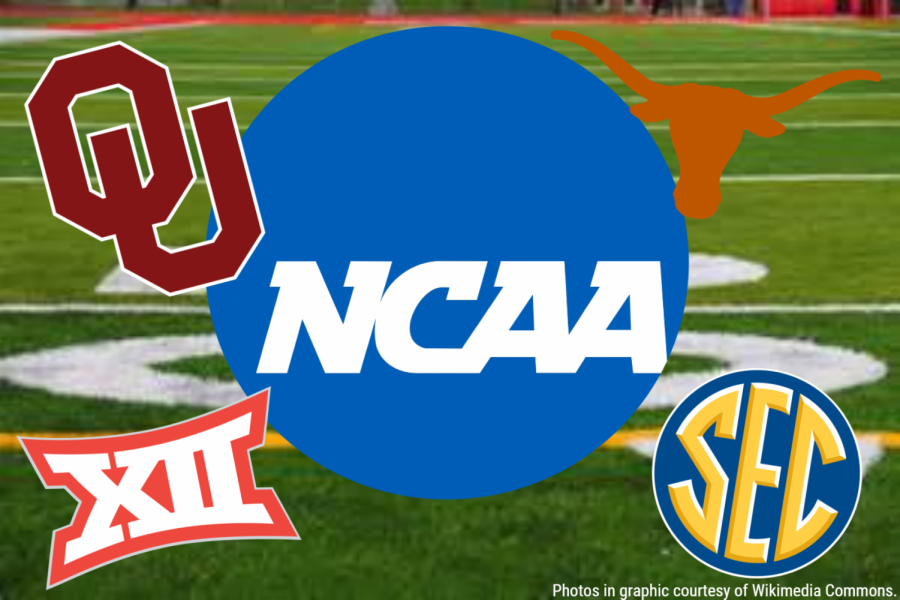The NCAA’s conferences are falling apart. Let’s talk about it.
In mid-July, groundbreaking news surfaced in the collegiate sports world that caused complete uncertainty for all. When the University of Texas and University of Oklahoma unexpectedly announced that they were looking to make a move to and were eventually accepted into the Southeastern Conference (SEC), the collegiate athletic world was sent into a frenzy. While on the surface this move might look beneficial, Texas and Oklahoma are doing more harm than good. The move is similar to the “Super League” concept that European soccer dealt with earlier this year. While the “Super League” situation was much worse, this is still a huge blow to the college world.
It is widely believed that this move was influenced by the universities’ biggest sport: football. The SEC is the strongest football conference in the nation, as in the past 10 seasons, the SEC accounts for 6 national championships and 43 national championships all-time. When Oklahoma and Texas join the conference, that number will rise to 54 all-time. This move solidifies the SEC as the strongest football conference, but it also leaves other conferences in question.
Currently, Texas and Oklahoma are members of the Big 12 Conference. As of now, the Big 12 contains 10 universities, but once Oklahoma and Texas leave, the conference will return to a size that is very familiar, eight. In a conference without divisions, eight is a number that would still allow for a conference championship game, but the loss of Oklahoma and Texas depletes the strength of competition in the Big 12. This move could prompt other teams to leave the conference, too. This is something that the University of Kansas and Iowa State University looked into. While talks went nowhere, Iowa State and Kansas did have calls set up with the Big Ten conference. Had the Big Ten given the green light to the universities, the Big 12 could’ve gone under for good.
Not only does this hurt the Big 12, but it also hurts certain other universities, including future SEC foe Texas A&M. Texas A&M, a former member of the Big 12, joined the SEC in 2012. While in the Big 12, Texas A&M practically stood in Texas’ shadow. Recruiting was a struggle for Texas A&M, which prompted their move to the SEC. To say football is a hot commodity in the state of Texas is an understatement. They live for football. This also means that they produce many prospects for college coaches to target. When they made the move to the SEC, Texas A&M gave an extra incentive to in-state recruits they were targeting: You can play in the strongest conference while staying in Texas. This is a big reason why Texas A&M’s football program has seen success in recent years. With Texas joining the SEC, that incentive is taken away from Texas A&M, and they will have to rely on their recent success to entice recruits.

After Texas and Oklahoma put the Big 12 into panic mode, the Big 10, Atlantic Coastal Conference (ACC) and Pacific Athletic Conference (PAC 12) decided to create an alliance. The conferences announced that their alliance would provide athletes an opportunity for new interconference games, among other benefits. This ensures that members of the PAC 12, Big 10 and ACC will receive strong competition from outside their respective conferences. The alliance was a major step toward rebalancing college football as well as all other collegiate sports, as it entices teams to stay in their conferences.
While the negatives are emphasized throughout this move, there is an argument to be made for Texas and Oklahoma. Getting the chance to play top competition like Alabama, Georgia and LSU, among others, is an opportunity that cannot be missed, and it is something that most teams would capitalize on. Despite this, the negatives that come from this move absolutely outweigh the positives.

Nicholas Rasmusson is a senior at Fishers and a second-year staff member. He is a huge sports fan and loves cheering for the Wisconsin Badgers.













